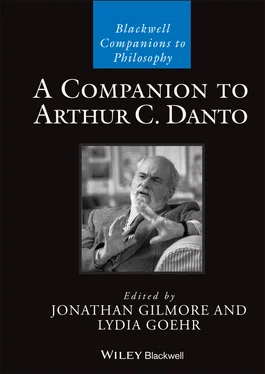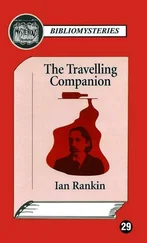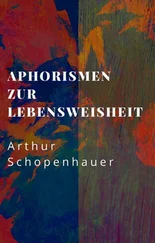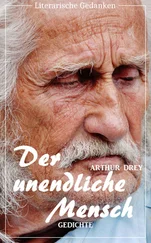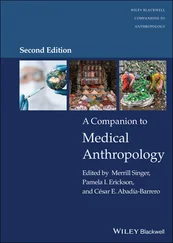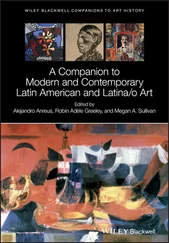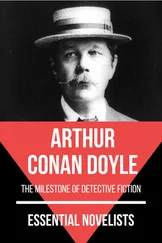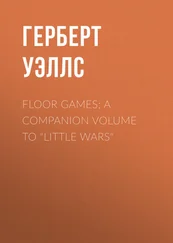A Companion to Arthur C. Danto
Здесь есть возможность читать онлайн «A Companion to Arthur C. Danto» — ознакомительный отрывок электронной книги совершенно бесплатно, а после прочтения отрывка купить полную версию. В некоторых случаях можно слушать аудио, скачать через торрент в формате fb2 и присутствует краткое содержание. Жанр: unrecognised, на английском языке. Описание произведения, (предисловие) а так же отзывы посетителей доступны на портале библиотеки ЛибКат.
- Название:A Companion to Arthur C. Danto
- Автор:
- Жанр:
- Год:неизвестен
- ISBN:нет данных
- Рейтинг книги:5 / 5. Голосов: 1
-
Избранное:Добавить в избранное
- Отзывы:
-
Ваша оценка:
- 100
- 1
- 2
- 3
- 4
- 5
A Companion to Arthur C. Danto: краткое содержание, описание и аннотация
Предлагаем к чтению аннотацию, описание, краткое содержание или предисловие (зависит от того, что написал сам автор книги «A Companion to Arthur C. Danto»). Если вы не нашли необходимую информацию о книге — напишите в комментариях, мы постараемся отыскать её.
Companion
A Companion to Arthur C. Danto
A Companion to Arthur C. Danto — читать онлайн ознакомительный отрывок
Ниже представлен текст книги, разбитый по страницам. Система сохранения места последней прочитанной страницы, позволяет с удобством читать онлайн бесплатно книгу «A Companion to Arthur C. Danto», без необходимости каждый раз заново искать на чём Вы остановились. Поставьте закладку, и сможете в любой момент перейти на страницу, на которой закончили чтение.
Интервал:
Закладка:
If the “I” is not another object of the world, but rather a point of view, and artworks show “the world as given” by the “I” of the artist, then through artworks the “you” of the spectator, listener, or reader undergoes a transfiguration and becomes, up to a point, the artist’s “I.” For Danto, “the greatest metaphors of art” are those in which “the spectator identifies himself” with the character. Reading Anna Karenina , I see myself as Anna and “to see oneself as Anna is in some way to be Anna.” To see “one’s life as her life” is an experience that changes one’s life (Danto 1981, 172–173). It is not enough for me to look at the world alone from my window. Great works of art reveal aspects of the world that enlarge my own perspective. Chardin’s vision changes my perspective.
The revelation of Chardin’s artwork springs from those brushstrokes. Thanks to this partial and momentary metamorphosis, I see the plums and, partly through glass and water, the fat and half empty bottle of red wine and the baguettes from Chardin’s first-person point of view. For that to happen, personal style is a must. In this particular painting, you look at the brushwork and you see traces of the movement of Chardin’ hand. The pulse and touch of the dead artist’s hand is still there, present and immediate.
Danto’s deep criticism of R.B. Kitaj in this context is telling. The meaning is not incarnated in the paintings themselves; Kitaj wanted for us to be guided by the autobiographical “prefaces” that accompanied his works. His “Self-Portrait as a Woman” (1978) shows a woman naked outdoors and we are expected to see her as a portrait of the artist. To see this you must read the title and the catalogue texts, because “typically … the paintings are assigned meanings without anything happening to the painting as viewed” (Danto 2000a, 130). Contrary to Chardin’s work, what the painting is about was not fully painted. Kitaj’s painting is an artwork, but it is powerless.
Hegel claims that in a work of art “meaning” and “appearance” ought to be “penetrated by one another” (Hegel 1835, 93). He believes that aesthetic judgments are about “the appropriateness or inappropriateness” of “content” and “means of presentation” (Hegel 1835, 11). This is largely Danto’s approach – the aesthetic failure of Kitaj’s “Self-Portrait as a Woman” is precisely a consequence of the lack of connection between the meaning and its material embodiment. A work of art ought to be “a piece of visual thought” (Danto 2013b, 165). “Prefaces,” external words, don’t do the job painting is supposed to do. When explanations are more interesting than the artwork itself, the artwork fails.
Consider Danto’s comments on a painting by Rothko. Given its abstraction, simplicity, and absolute dependence on the nuances of pigments, it is extremely difficult to translate the artwork into words. That is a good thing. “The rectangles, in ‘Untitled’ (1960) share no boundaries. … So what does being close to them reveal? The amazing edges of the rectangles, and the way underlayers of paint reach through the rectangles to give a sense of translucency. These forms are not pure red and pure black, as they appear from afar. The extraordinary beauty is due to the way the edges of the forms appear to penetrate and to be penetrated by the ground color of the paintings; and to the way the undercolors flicker through the surface colors. These animate the forms as well as the colors through irregular pulsations of light” (Danto 2000b, 341). Rothko thinks with his colors. As opposed to Kitaj’s “Self-portrait as a woman,” where the meaning has not been integrated with its brushwork and remains external to it, Rothko’s thinking appears in and through his painting of colors and forms. And what about the meaning? Does this painting have one? “Beauty,” simply, so claims Danto, is “the meaning of Rothko’s work” (Danto 2000b, 342).
We do make aesthetic judgments and expect others to share our point of view. We comment on a film’s poignant dialogues, the elegant design of a chair or a fork, the nostalgic sadness of a nocturne, the balance of a building’s façade, the magnificence of the sea as it rises and explodes into foam against a rock, and so forth. When we express these judgments we invite someone else to share in our experience. Aesthetic judgment transfers an aesthetic experience. Yet are the judgments ever final? Being drawn from interpretation, do they ever exhaust an artwork’s meaning? Often what comes after gives a different value to works that were produced before: impressionism changes the way in which Velázquez’s paintings are seen, Picasso makes us see African masks from a new outlook. Danto suggests that artworks are like events in how they “derive their importance from what they led to.” Nevertheless, his interpretation of artworks remains tethered to the artist’s intentions, restricting, in my view, the scope and potential meaning of artworks (Danto 1986, 44, 1997, 75; 2013a, 15 and ff; 2013c, 386–387).
Hegel wrote that an artwork is “essentially a question, an address to the responsive breast, a call to the mind” (Hegel 1835, 71). One could say that style similarly is a sort of address, an invitation to another person. Good writing summons the reader to experience the text in a certain way. Danto’s own style was an invitation, almost intimate, to engage his enticing and entertaining way of thinking. There is something contagious about it. In reading Danto, his voice continues to resonate. His writing creates the impression that he is speaking and simply registering his thoughts and imaginings as they come. “He allows his prose to wander and invites the reader to wander with it,” observed Christopher Sartwell (Sartwell 2013, 711). Often, in the midst of rigorous conceptual analysis, he introduces amusing and telling fictional characters. “Testadura,” is a favored example, “a plain speaker and noted philistine,” who could only see Rauschenberg’s “Bed” as a real and dirty bed, or the drips of paint given to plain sight.
When Danto addressed abstract expressionism, he talked about the paintings themselves, but he also captured a certain Tenth Avenue atmosphere of the times. He wrote of a canvas itself describing
a rotation through ninety degrees from its vertical position on the easel to its horizontal position on the floor, which the painter crouches over like a frog-god. But the drip is also evidence for the urgency of the painting act, of pure speed and passion, as the artist swings loops and eccentric arabesques across the surface, sending up showers and explosions of spatters. And since he merely executed the will of the paint to be itself, the artist had nothing of his own to say. This went with that studied brutishness of the Dumb Artist exemplified over and over again in the artworld of the time by really quite intelligent men and women who pretended to a kind of autism, and went around in clothes so splashed with paint that the very costume was an advertisement for the closeness between the artist and his work (Danto 1981, 109).
I have quoted this passage at length to show Danto’s gift as a writer. The painter is a “frog-god,” who with the “studied brutishness of the Dumb Artist” fills the canvas with splashes and drips of paint. This ironic passage is very much in the spirit of Lichtenstein’s “Brushstrokes” or Rauschenberg’s “Bed” and their allusions to Pollock’s drip painting. The reader enjoys the wit and spontaneity in Danto’s style, a style where often the risk and adventure reveal the daring on his part to take unfamiliar philosophical paths.
Style is part of our everyday life. A living room may be decorated in a modernist style, but also with a personal flair or touch that stands out against the background of a prevalent style. People dress and adorn their bodies, says Hegel, because of the need to alter the external world. The human being recognizes himself as such, as free, as a person, by altering the world. The world modified by human activity may be like a fingerprint of the self and, therefore, may allow self-recognition. The human being is always striving through different activities ultimately “to make this foreign world for himself,” because otherwise “he is not being at home in it” (Hegel 1835, 31, 98). Art is an attempt to mold and mark and humanize the external world, and so is style. Language is public, and when we recognize someone’s style, it is because the writer has impressed his first-person perspective into the material of language, thus making a home in it, a home the reader may also inhabit.
Читать дальшеИнтервал:
Закладка:
Похожие книги на «A Companion to Arthur C. Danto»
Представляем Вашему вниманию похожие книги на «A Companion to Arthur C. Danto» списком для выбора. Мы отобрали схожую по названию и смыслу литературу в надежде предоставить читателям больше вариантов отыскать новые, интересные, ещё непрочитанные произведения.
Обсуждение, отзывы о книге «A Companion to Arthur C. Danto» и просто собственные мнения читателей. Оставьте ваши комментарии, напишите, что Вы думаете о произведении, его смысле или главных героях. Укажите что конкретно понравилось, а что нет, и почему Вы так считаете.
